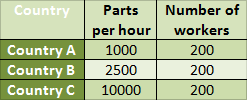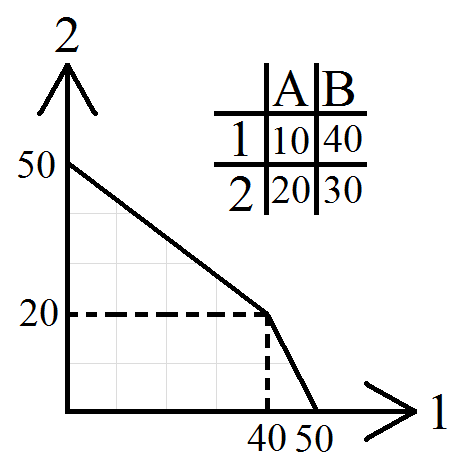Focus Question: What is absolute and comparative advantage?
 |
| US International Trade Commission Seal |
A.) Define and distinguish between absolute and comparative advantage.
Absolute Advantage: "A country has an absolute advantage in the line of production of a good relative to another country if it can produce the good at a lower cost or with a higher productivity" (Suranovic 1).
- India has an absolute advantage in operating call centers compared to the Philippines because of its low cost of labor and abundant labor force.
Comparative Advantage: "A country has a comparative advantage in the production of a good if it can produce that good at a lower opportunity cost relative to another country" (Suranovic 1).
- It might be cheaper for India to operate call centers compared to the Philippines, but the potential gains from another activity, such as information technology services, might be far greater for India. For that reason, the Philippines has comparative advantage for American customers.
For more information on absolute advantage and comparative advantage see Ralph Byrns's page.
Short video describing advantage and comparative advantage.
Activity to help students understand absolute and comparative advantage and how it influences why a country would trade.
Examples of Absolute Advantage:


Example of Comparative Advantage:

 See Why Nations Trade from EcEdEconomics Lessons for a great lesson plan that covers opportunity cost. absolute advantage. comparative advantage, and specialization terms of trade.
See Why Nations Trade from EcEdEconomics Lessons for a great lesson plan that covers opportunity cost. absolute advantage. comparative advantage, and specialization terms of trade.
B.) Explain how most trade occurs because of comparative advantage in the production of a particular good or service.
 |
| International Trade Administration seal |
"Comparative advantage is the ability to produce a good or service at a lower opportunity cost than another producer. When the opportunity cost of producing a good is lower in one country than in another, the first country is said to have a comparative advantage in producing that good" (Everyday Economics).
Opportunity Cost definition: "the loss of potential gain from other alternatives when one alternative is chosen"
Opportunity cost is perhaps the most important aspect of comparative advantage, when trade is being sought out a nation would want to reduce the opportunity cost of that trade investment. Think of this in terms of getting the most "bang for your buck".
"Every country’s unique combination of productive resources determines what goods and services its people can produce most efficiently. Through trade, countries exchange goods they produce most efficiently for goods other countries produce most efficiently" (Everyday Economics).
Below is a link for a crash course video on specialization and trade. In the video they define absolute and comparative advantage as well as providing some background on other economic processes involving trade.
https://www.youtube.com/watch?v=NI9TLDIPVcs
Below is a lesson plan on trade, upon its completion students should be able to understand and define comparative and absolute advantage as well as other aspects of international trade:
https://www.frbatlanta.org/-/media/documents/education/publications/extra-credit/2017/spring/high-school/international/international-trade-and-comparative-advantage/extra-credit_international-trade-lesson.pdf
The Case for Free Trade-Absolute Advantage provides an example for why it makes sense for two countries to trade when each has an absolute advantage in one of the two goods being traded.
How Comparative Advantage in the Asia-Pacific affects global trade and policy as a whole.
Sources:
Definitions: Absolute and Comparative Advantage (2009). Retrieved 24 April 2011 from Steven M. Suranovic's page: http://www.unc.edu/depts/econ/byrns_web/Economicae/Essays/ABS_Comp_Adv.htm.
A Glossary of Political Terms: Comparative Advantage. Retrieved 24 April 2011 from Dr. Paul M. Johnson's page: http://www.unc.edu/depts/econ/byrns_web/Economicae/Essays/ABS_Comp_Adv.htm.
Comparative Advantage and Absolute Advantage (2011). Retrieved 24 April 2011 from Ralph Burn's page: http://www.unc.edu/depts/econ/byrns_web/Economicae/Essays/ABS_Comp_Adv.htm.
Why Nations Trade. Retrieved 24 April 2011 from EcEdEconomics Lessons' site: http://ecedweb.unomaha.edu/lessons/feog1.htm.
The Case for Free Trade-Absolute Advantage. Retrieved 24 April 2011 from S-cool the revision website: http://www.s-cool.co.uk/a-level/economics/why-trade/revise-it/the-case-for-free-trade-absolute-advantage.
Everyday Economics: International Trade. Retrieved 24 April 2011 the Federal Reserve Bank of Dallas's site: http://dallasfed.org/educate/everyday/trade.html.
All images obtained from Wikimedia Commons.
Comments (0)
You don't have permission to comment on this page.